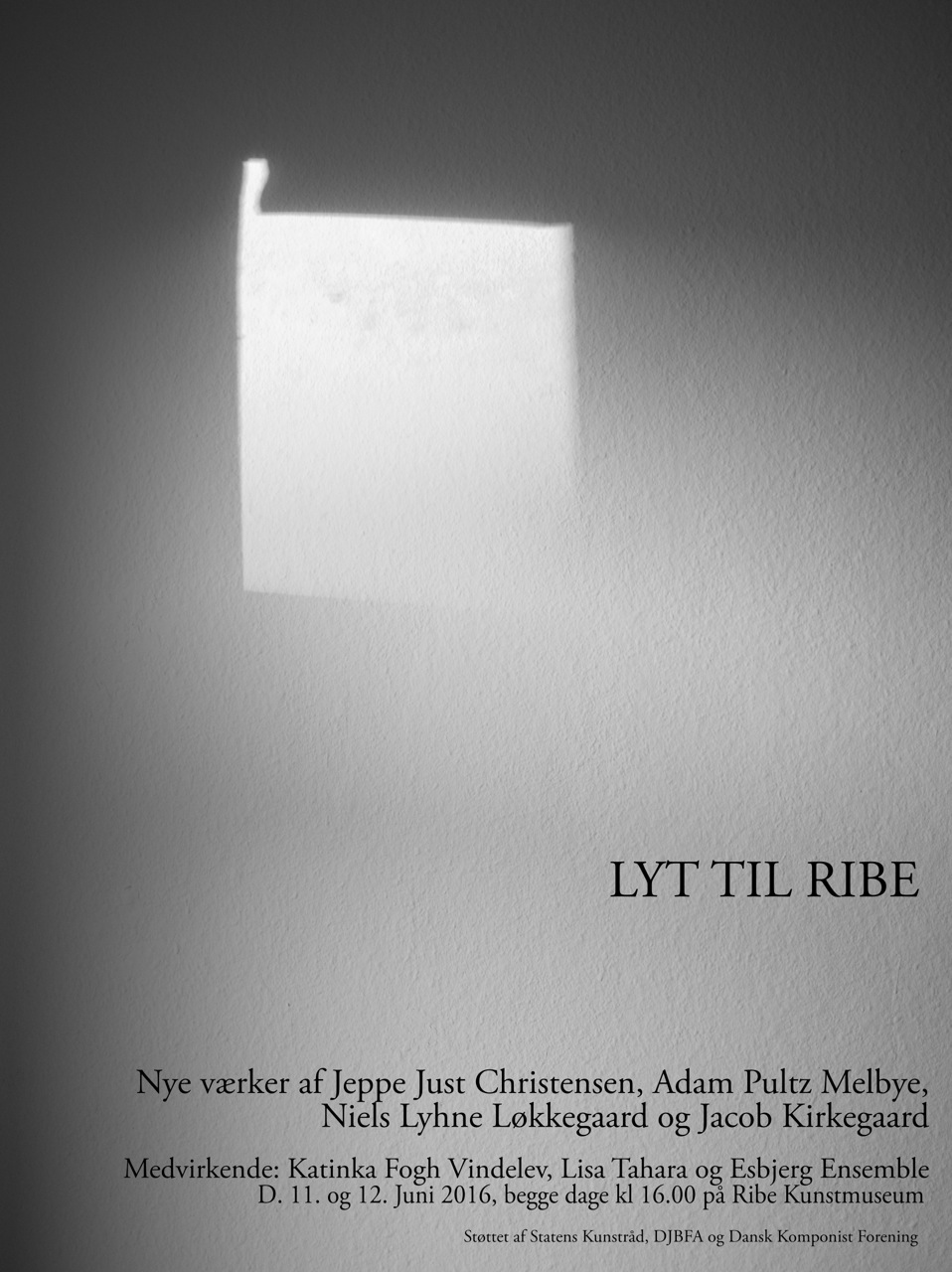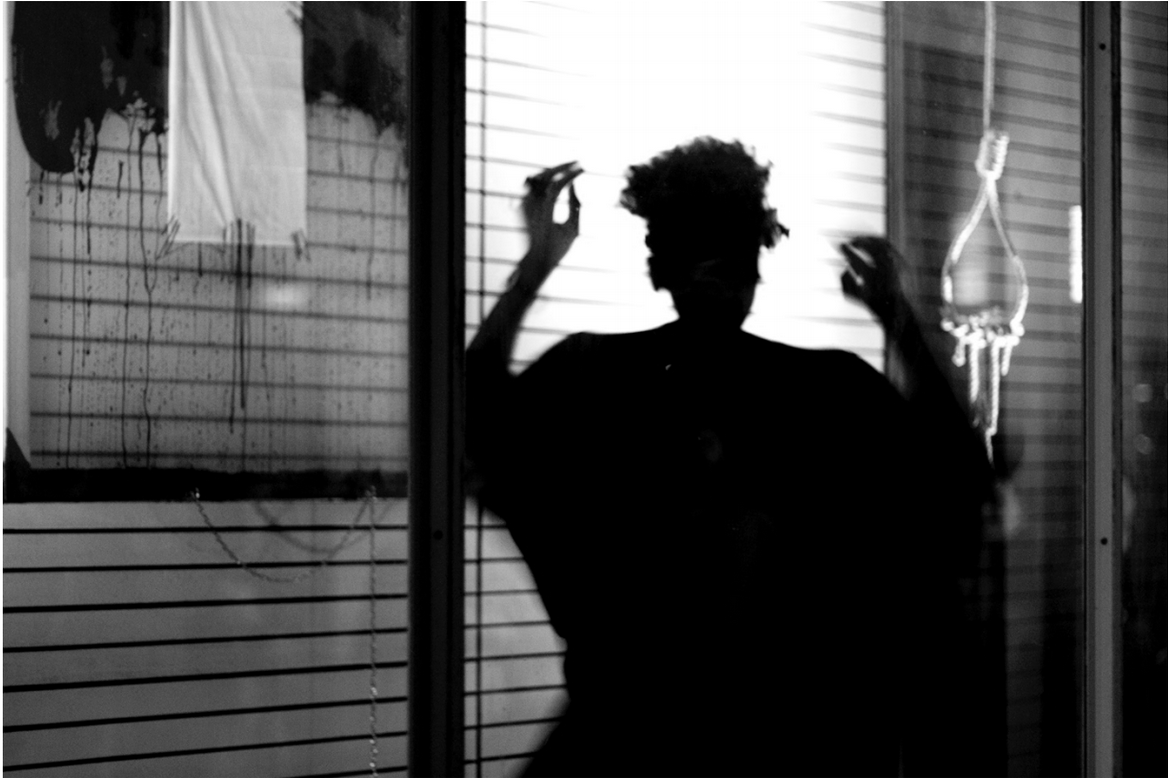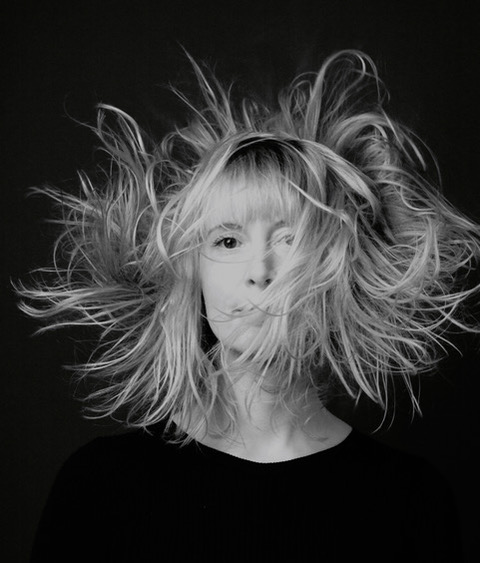Jacob Kirkegaard – Sound-in-itself as a political statement (interview)
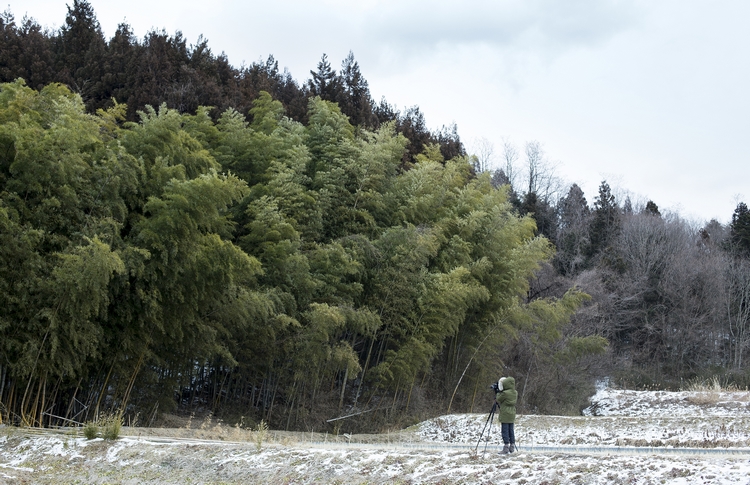
Interview by Jockel Liess and Mette Slot Johnsen – photo: Katinka Fogh Vindelev, Takashi Arai and Jacob Kirkegaard
Jacob Kirkegaard has just come back from a last visit to his first major solo exhibition at Roskilde Museum of Contemporary Art, “Earside Out”. An exhibition which displayed Kirkegaard’s work as a sound artist, although his body of work spreads into field recordings, film sound, photography as well as producing and creating experimental music. “Earside Out” garnered much interest and Kirkegaard’s parting gesture was to give a talk in the local library, very much preaching to the unconverted. It sounds like hard work, but Kirkegaard seems to enjoy precisely this, and very much prefers it to being idle.
Our conversation with Kirkegaard starts by discussing “Earside Out”. In relation to the exhibition he states that the biggest challenge in presenting his sound installations to new audiences is to engage them to the point where “the audiences really listen, and not cover their ears when presented with the previously unheard”. He aims to keep the audience receptive. “In a way with art it is the same way as in all aspects of life. If you meet someone new you don’t want to close them up. You want to say what you have to say without losing or offending them immediately. The important point is to strike a balance between provocation and keeping your audience with you.”
Even so Kirkegaard doesn’t want to spell out or oversimplify his aims, he tries “to create works that are open to how you understand or grasp them, thereby leaving the audience to be free and have space to give their own interpretation.” To illustrate this he quotes John Cage: “I like to be moved, but I don’t like to be pushed”. Kirkegaard wants to stimulate his audience into active participation, to feel and experience his work. “I’m not going to tell you how to feel!” he states. For him it is “important to do something that invokes imagination; that doesn’t tell the full story.”
Having spent a lot of time with his recent show and having given several interviews about it, the artist is keen to move on. “Nobody wants to repeat themselves,” he tells us early on in our conversation, and we are happy to talk about aspects of his practice which maybe have been discussed less in the past.
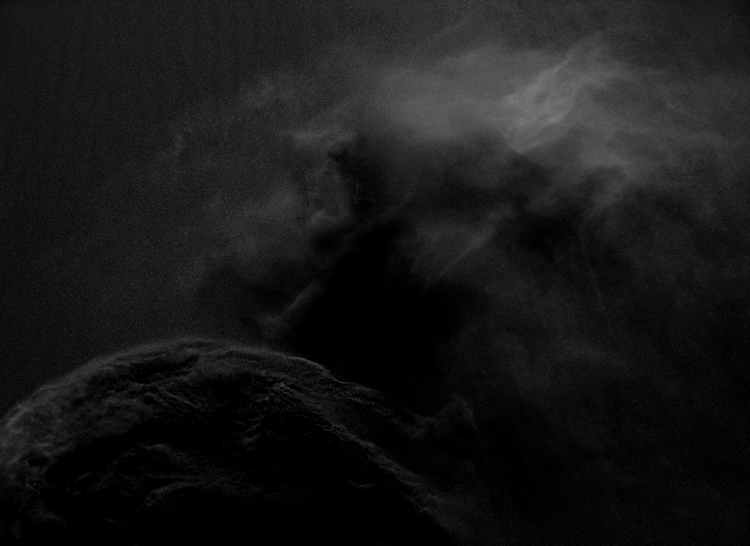
The singing sands (Oman 2008-2009)
One of these is Kirkegaard’s fascination with the mystical, and he enthusiastically explains its relevance and influence on his thoughts and work. We approach the subject when he cites the recent book “The Dance of Reality” by the film director Alejandro Jodorowsky as a great inspiration. Having finished reading it that morning he explains “Jodorowsky’s book talks a lot about mysticism and says that life is what you make it, and art is what you make of your story and your memories. All reality is an illusion, something that you create within yourself. That is very important for me, not only in life, but in the way I create my works.”
Relating this directly to his work he continues: “I’m interested in these unheard sounds, but I realised some years back that I’m not so interested in revealing them. I would like to keep them mysterious, because it is paradoxical in a way. I go to a place and record something, a mythological phenomenon, a national phenomenon or listening to a radioactive room, but the way I recorded these aim to keep a non-documentary approach. I don’t want to create a one-to-one, I don’t want to say: ‘this is the sound of the singing sands of Oman’ or ‘this is the sound of radioactivity’. The approach is to experience and to grasp these phenomena, but still hopefully have the mystery remaining or intact.”
Kirkegaard’s audio-visual installation “Aion” (also released as the album “4 Rooms” on the label Touch) is an interesting example for his quest in the mystical nature of a location or place. The slow and somewhat eerie drone pieces comprising this work are recorded in the radioactive region of Chernobyl, a place he’s repeatedly described as mystical. In Kirkegaard’s representation of four abandoned spaces within the exclusion zone, he communicates his experience of this extreme environment. A place, he clarifies, “I like to understand through art as opposed to science.”
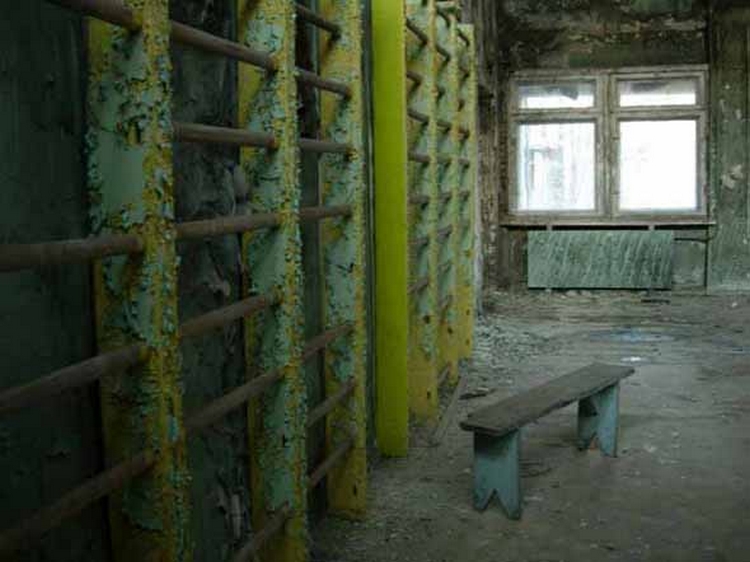
Photo from the recording of Aion (Chernobyl 2005)
In different ways both art and science often target the impossible or unimaginable, and try to investigate the boundaries of experience and knowledge. He states in relation to his practice: “What differs is that I’m not interested in the answer. I don’t want to tell you what it is. These places or phenomena exist, and we have to do what we can, with art or science, to somehow deal with them. But we have different ways in which we can relate to things. You can relate to Chernobyl by seeing pictures or reading about the impact of the radiation. But you can also just listen to these rooms in the way I chose to record them, and this gives you a window to experience them from another perspective.”
The nature of Kirkegaard’s thought process and investigative artistic practice – as well as maybe his recent influence by Jodorowsky – is revealed when he reflects: “It occurred to me that there is such a big difference between to grasp and to understand, at least in my world. I think you need to be able to grasp something before you can understand something. In my mind, the word understanding is something that you usually read and you understand. But what actually helps you overcome and move on is to actually grasp it, feel it or sense it in some way.”
To clarify his abstract contemplation, Kirkegaard refers to his project “Durch die Wand (Through the Wall)”; a work he made to mark the 25th anniversary of the fall of the Berlin Wall. For this piece he travelled to Bethlehem in 2013 in order to record sound material from the Israeli West Bank Barrier, an 8-meter high concrete wall with a final length of 810 kilometres. He explains: “I like to listen to that wall, to let the wall speak. Human beings are doing things like this, no matter if we like it or not. We are creating nuclear energy. We are still building walls. We think we are so free here in Berlin, 25 years after the fall of the Wall, but they are building an even larger wall down there. So just listening to the breathing and vibration of it helps me to be able to grasp it.”
In his recently published book “Earside Out” Kirkegaard elaborates on his process and intentions of recording the Israeli West Bank Barrier. “I wanted to place my vibration sensor on each side of it, in a manner similar to leaning my ear to the wall.” The impartial act of listening is thus of great importance to Kirkegaard. The aim of the work of art itself isn’t to express an opinion, but rather to be seen as a neutral representation of reality. It exists purely to shine a light on human action and activity, through deliberate documentation of the same with field recordings. He continues in his book; “like other places I’ve travelled to – Greenland, Chernobyl and Fukushima – it is impossible not to recognize the political issues that surround them. But in my works I find it important to refrain from directly expressing an opinion, mine or that of others, on the political and social issues raised.”

The Israeli West Bank Barrier (Bethlehem)
Kirkegaard is inherently political, however, and we diverge straight from the West Bank to Ungdomshuset in Copenhagen and Kirkegaard’s Punk past when our conversation moves to the subject of cultural sensitivity. Ungdomshuset is a user run youth centre and music venue home to varying Autonomen and leftist groups (1982- present). The original site was sold, cleared violently by the city’s authorities in 2007, and later demolished: “Ungdomshuset was very important! All punk bands played there and I always went there when I was a teenager to see bands. Then it was torn down. It was terrible.” To Kirkegaard the artist Shepard Fairey and his commissioned mural illustrate the potential difficulty artists may face while working within a socially or politically charged environment. “When Ungdomshuset was gone, there was this huge blank façade … and he [Shepard Fairey] did this huge art piece and was paid money for it. It was this white dove of peace. And that was just like a red rag,” a provocation to the recently evicted community of the centre. “What! This is not peace,” he exclaims recalling the event. “The whole thing was very sad.”
But Kirkegaard has a positive dialogue with the Palestinian community. He was in Palestine again in January to record the sound for Kamal Aljafari’s new film: “They are open, not many people come and visit,” he explains. Of course he is very aware of the political situation in the West Bank and on two occasions decided against accepting invitations from Israeli museums. “There are many great people of course, but do you want to support the state or not? Do you want to give it a carte blanche and say: ‘it’s great; I respect you as a state’? ‘I’ll let you promote yourself on me.’ I can’t do that. I don’t want to perform in Israel as long as it is a racist state, which I think it is.”
The potential of controversy isn’t new to Kirkegaard. He’s outspoken and has been told in the past: “You don’t know what you’re talking about, because you’ve just grown up in a flower scented nation, with peace and everything.” Whether it’s peers or opponents denying each other an opinion, based on information, empathy and judgement, Kirkegaard thinks it’s a common problem in our society. “You’re white, you can’t talk about what it is like to be black. You’re not a woman so you can’t be a feminist. You’re not a Jew so you can’t criticize Israel.” Not without acknowledging the humour of his next statement he laments: “It is very difficult to have an opinion about something if you’re just an educated person from a non-corrupt society.”
One area, however, where no one would question his judgement, is in the cultural importance of another recent project by Kirkegaard. “The world is so full of gems” he says with admiration, when our conversation touches on Else Marie Pade. Pade’s pioneering electronic music has received some recognition in Denmark in the last fifteen years. However, it wasn’t until Kirkegaard’s collaboration with Pade on the acclaimed album “SVÆVNINGER” in 2012, that her international reputation began to be re-established. The subsequent release of her album “Electronic Works 1958-1995” by Important Records, produced and curated by Kirkegaard, did the rest. “Human beings are curious. Archaeologists are curious to find traces of our past, I love to discover hitherto undiscovered things, and also sounds,” he says.
Else Marie Pade’s life and work is well deserved of his attention. Not only does she have strong political persuasions and no inhibitions to act or speak out according to them, she also was amongst the European avant-garde of her time. Pade lead the way on Musique Concrète in Denmark, a musical tradition, which in turn sparked Kirkegaard’s fascination for sound as an artistic tool. “In 1994 I heard a program about Pierre Schaeffer and Musique Concrète. I didn’t know it existed before that, and that was when I thought: You can actually do something with sound. It can become something you can compose with, that’s possible, somebody has done that. That was very inspiring to me.” In the same vein he mentions Leif Elggren, Walter Ruttmann and Harry Bertoia.
That continued curiosity will remain an influence on Kirkegaard’s work, alongside socio-political events of our time, is evident when he refers to a metaphor by his friend, the composer Carl Michael von Hausswolff. In the text written especially for Pade’s current release von Hausswolff writes: “I am inside one of many important gold mines in the world. A place where a lot of golden nuggets have already been found and where some are still buried inside the hard rock walls that run for at least a few miles into the mountain – a mountain named History of Recorded Composed Music…”
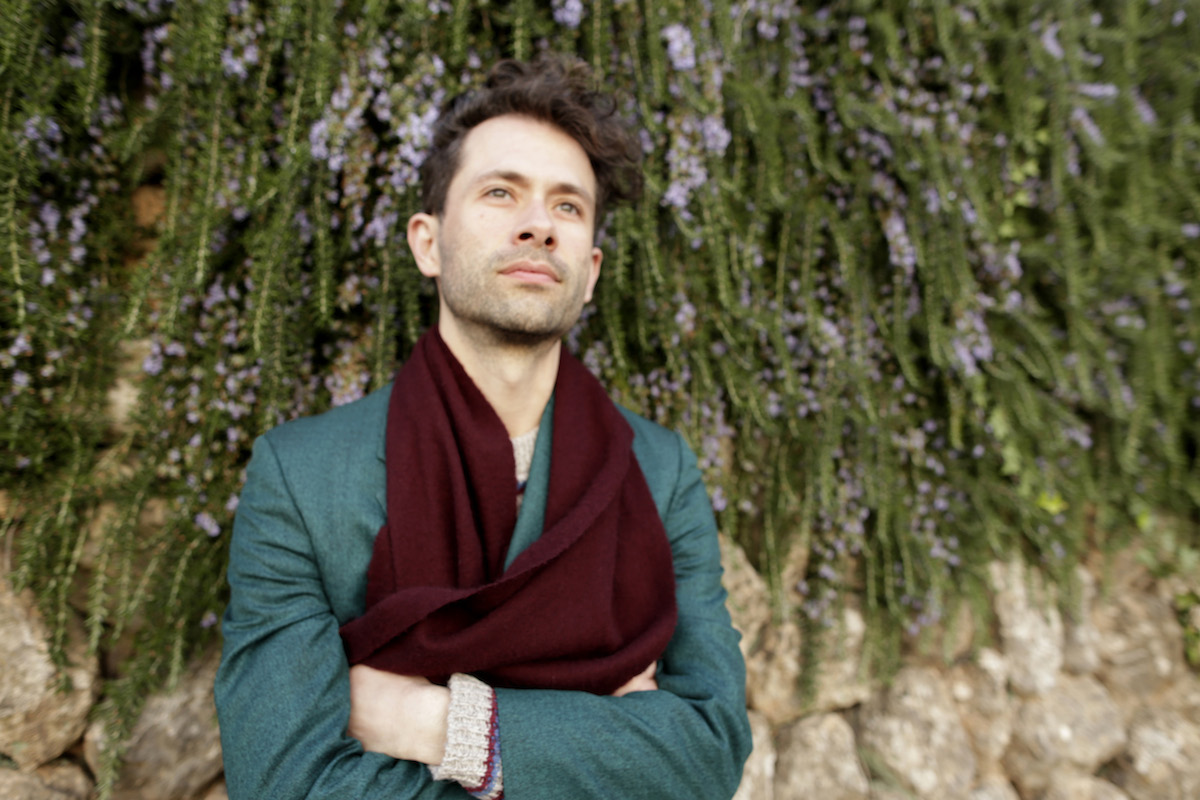
Kirkegaard’s own latest contribution to said goldmine is the triple cassette album “5 Pieces”. It’s released on the record label Posh Isolation, and compliments his retrospective exhibition at Roskilde Museum of Contemporary Art. The five slow and meditative drone/noise pieces presented on the album represent Kirkegaard’s musical endeavours from 2006 till 2014. Comprised of processed field recordings slowly changing and evolving, they illustrate that the groundings of his work is not only in the realm of art, but also firmly in the world of experimental music.
Regardless of whether he finds himself in the fertile undergrowth of noise and sound producing grass roots or climbing up to the loftier layers of foliage in institutions like MoMA, Kirkegaard’s approach seems to be unchanged: Evoking curiosity and a sense of wonder, which is only possible by allowing space for mystery. We’ll leave you with Kirkegaard’s anecdote of an early life lesson:
“I remember as a kid I had a birthday. And my dad was making this game with me, where I could follow these pieces of paper saying: Go somewhere high. And I had to go there to find another paper and so on. In the end it said: Go somewhere warm. And in the oven there was light, no heat, and there was a present. A box wrapped in red paper, and it was like: Woahhhh!!!!! That’s my memory and I don’t remember what was in the box, because that doesn’t matter. Until this day that red box exists in my mind as a container for all things imaginable that is only limited by my imagination.”
Info: Read more about the different projects at Jacob Kirkegaards website: fonik.dk
Further listening – recommended by the Passive/Aggressive editorial staff:
Jacob Kirkegaard – “Eldfjall” and “4 Rooms” (Touch 2005 and 2006)
TR Kirstein and Jacob Kirkegaard – “Imperia” (Recorded at Barsebäck i 2004, Posh Isolation 2012)
Else Marie Pade + Jacob Kirkegaard – “Svævninger” (Important Records, 2013)

